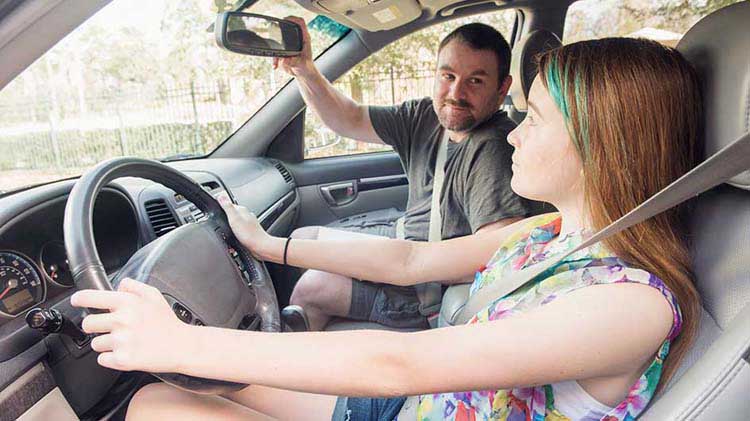Preventing backovers and rearview safety
Here are some ways to help stop this scenario from happening to you.
One of the most heartbreaking of all crashes is a backover accident caused by a vehicle, usually one parked in a driveway or in a parking lot backing over an unseen person behind the car. The victim is commonly a child or an elderly person. In 2022, according to the nonprofit organization Kids and Cars, 18 children under the age of 12 were killed in backover incidents. According to a National Highway Traffic Safety Administration 2022 report, the 5 year average from 2016 to 2020 was 264 fatalities from backing vehicles.
Any area around the vehicle that the driver can't see, either directly or through a side or rearview mirror, is considered a blind spot. All vehicles have blind spots, and the blindest of all is at the rear of the vehicle. Children are especially vulnerable when walking or playing behind a parked vehicle, being small and unlikely to be noticed by the driver from inside the car.
Tips to help avoid a backover accident:
- Look all around before you get in the vehicle. No matter where you are parked, walk around the vehicle and look underneath it. If there are children playing nearby, count them before entering the vehicle.
- Look behind once in the vehicle. Turn your head to look behind you after entering the vehicle. If there were children, make sure that you can still see them all before you back out. If another adult is available, have them watch the children and act as a spotter while you back out.
- Listen. Turn off the radio and keep windows rolled down so you can hear, as well as see, what's going on around you.
- Be prepared to stop. A tragedy can happen in a heartbeat. Back out slowly and cautiously and with complete control over the car and be ready to stop instantly if needed.
- Do not rely on backup cameras and sensors alone. Controlled tests have demonstrated that cameras and sensors mounted on SUVs and other large vehicles, while helpful, are not foolproof in detecting children playing or crossing behind the vehicle. Detection results vary according to several factors, including the number and position of the children (such as a child pausing at the rear corner of the vehicle), weather conditions, slope of driveway or street and so on. It helps to check your rearview and side mirrors in addition to your camera as you back out.
- Teach children not to play near cars. Don't allow the driveway to become a play area. See that your children are taught to never play near, under, inside or behind a vehicle of any kind.
- Trim landscaping around driveways and sidewalks. This can help increase visibility when you are backing up.
- Clean your vehicle's backup camera regularly. Road grime and snow can build up on your rearview camera and impair the ability to see clearly.
- Consider installing a backup camera if you don’t have one. You can purchase an aftermarket system to install on the license plate holder, bumper or hitch.
Rearview safety and backup camera systems
As of May 2018, the National Highway Traffic Safety Administration (NHTSA) ruled that all new vehicles be equipped with rear visibility technology. Backup camera systems are now standard equipment in car manufacturing.
According to NHTSA, "It’s important to remember that backup cameras are not a replacement for mirrors or turning around to look." Review your vehicle's owner's manual for more information on the vehicle’s technology and safety features.
Will my insurance premiums decrease if my vehicle has a backup camera?
It may be unlikely that you'll save money on your auto insurance by simply having a backup camera.
However, there may be a combination of standard car features that some auto insurers may figure into their rating factors or vehicle safety discount, which might include the backup camera. Some other standard features may include:
- Air bags
- Anti-lock brakes
- Seat belts
- Crash-resistant doors
- Electronic stability control
- Daytime running lights
Contact your local agent to see if you are eligible for discounts on your policy. You can get an auto insurance quote now, or give us a few details and a State Farm® agent will reach out to you.




